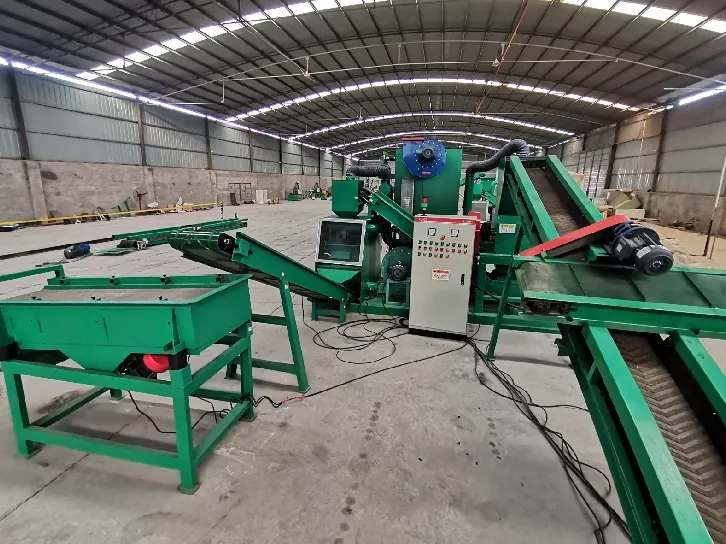
9 月 . 15, 2024 09:34 Back to list
Understanding Eddy Current Separators Principles and Applications
Eddy current separators are innovative devices used in the recycling and materials recovery industries to separate non-ferrous metals from a waste stream. They play a crucial role in enhancing material recovery efficiency, particularly for recyclable materials like aluminum, copper, and brass. Understanding the working principles and applications of eddy current separators is essential for maximizing their benefits in waste management processes.
Working Principle
The eddy current separator operates on the principle of electromagnetic induction. When conductive materials move through a rotating magnetic field, they generate electric currents, known as eddy currents. This phenomenon occurs due to the relative motion between the conductive metal and the changing magnetic field created by the separator's rotor. The eddy currents produce their own magnetic fields, which interact with the original magnetic field, causing the conductive materials to experience a repulsive force.
The core of the eddy current separator consists of a conveyor belt that transports the material to be sorted. As the material passes through the separator, the rotating magnetic drum generates a powerful magnetic field. Non-ferrous metallic items experience a strong repulsive force, which causes them to be propelled away from the waste stream, ultimately directing them into a separate collection bin. In contrast, non-conductive materials, such as plastics or ceramics, simply fall off the conveyor belt and continue through the waste processing system.
Applications

Eddy current separators are widely used in various industries, particularly in recycling facilities, to recover valuable metals from post-consumer products. One of the primary applications is in the separation of aluminum cans from mixed waste materials. Given the high recycling value of aluminum, efficient recovery through eddy current systems significantly reduces waste and conserves natural resources.
Moreover, these separators are also employed in the electronic waste recycling sector. They help to extract precious metals such as gold, silver, and copper from discarded electronic devices, enhancing the overall efficiency of the recycling process. By utilizing eddy current technology, recyclers can achieve higher recovery rates and improve the profitability of their operations.
In addition to recycling applications, eddy current separators are utilized in industries like mining and manufacturing, where they help separate metal contaminants from various materials. This not only ensures product quality but also protects machinery from potential damage caused by metallic debris.
Advantages
The advantages of eddy current separators are manifold. They offer high separation efficiency and can process a wide variety of materials with minimal maintenance. The technology is highly adaptable and can be integrated into existing recycling and processing systems. Furthermore, eddy current separators contribute to environmental sustainability by promoting the recovery of valuable metals and reducing the volume of waste sent to landfills.
In conclusion, eddy current separators are pivotal in enhancing the efficiency of metal recovery processes in diverse industries. Their ability to effectively separate non-ferrous metals from other materials makes them essential tools in the recycling sector. As technology continues to evolve, eddy current separators will undoubtedly play an increasingly significant role in resource recovery and environmental conservation, paving the way for a more sustainable future.
Latest news
Unveiling the Power of Eddy Current Separator
NewsSep.25,2024
Transform Your Home Recyclin:home metal shredder
NewsSep.25,2024
The Future of Waste Management with Recycling Line Picker
NewsSep.25,2024
The Benefits of a Metal Recycling Plant
NewsSep.25,2024
Revolutionize Material Separation with Onwang Technology
NewsSep.25,2024
Innovative Waste Management: Unveiling the MSW Sorting Plant
NewsSep.25,2024